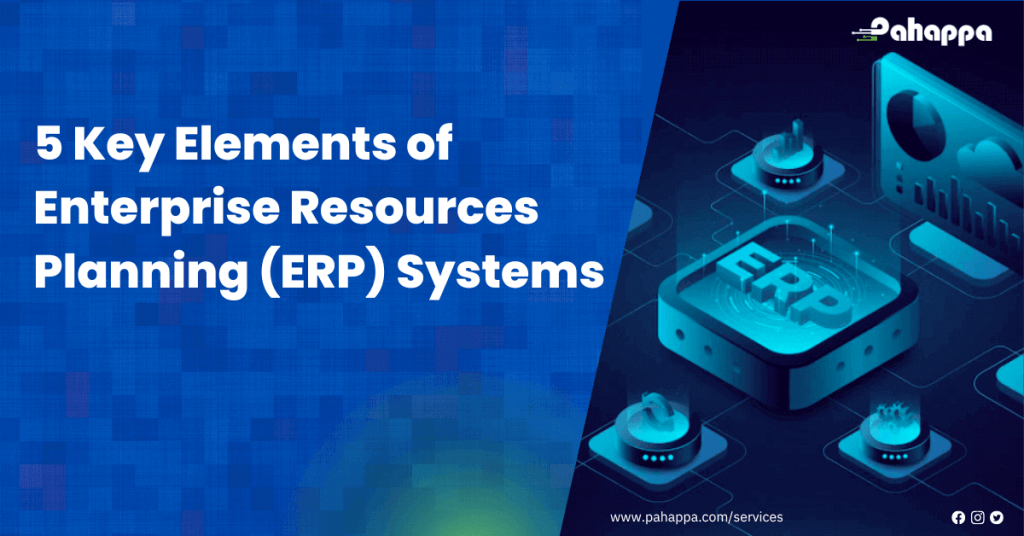You now understand the main advantages that ERP software offers businesses and why it is so important to them. But what sets an ERP system apart from other kinds of company software and what makes it an ERP system? To fully realize the full value of an ERP, a few essential components are necessary, including:
1. A Common database that enables firms to centralize information from several departments is a key advantage of an ERP system. The need to manually merge various databases, each with its own set of controls for the business tasks they serve, is removed by having a lone source of real-time data (ERP). A shared database makes it possible to have a consistent, cross-functional view of the business.
2. Consistent user experience & interface. Everyone uses the same user interface (UI) and has a similar user experience (UX) with an ERP, regardless of departments or jobs. If you purchase the modules for inventory management, human resources, and finance from the same vendor, they will all have the same appearance and functionality. As a result, the system is used more frequently and adoption between departments is frictionless. Users that have a uniform UX and UI can rapidly locate and comprehend information from all areas of the company, which increases efficiency.
3. Business process integration. Whether they are involved in accounting, supply chain management, or marketing, the ideal platform (ERP) will be able to support and integrate a variety of processes; by linking workflows that are essential to the business.’Performance, productivity, and visibility are increased, which translates to reduced costs.
4. Automation of repetitive operations like payroll, invoicing, order processing, and reporting is a fundamental aspect of ERP software. This saves time and eliminates errors by reducing manual, and occasionally redundant, data entry. Your personnel may now concentrate on work that adds value and makes use of their unique knowledge and abilities thanks to automation.
5. Data analysis: An ERP‘s ability to break down information silos is among its most valuable features. You may identify sections of your business that are operating incredibly well and those that are falling short of expectations when you can combine and match data from just about any component of your business into meaningful reports. Leaders have the ability to analyze issues and start working on solutions straight away.
ERP systems by business size: Your ERP needs are influenced by a variety of factors, including revenue and/or the number of employees. There isn’t a single solution that will work best for every small, middle or large business. However, there are features that are specific to the different business types as well as the preferred deployment options for each, as seen below.
Small business ERP. Small businesses should start with a checklist of their needs before beginning, to steer clear of software that has many more features than they actually require. As a result, there will be less expense and less need for employee training. However, the system should have a simple installation procedure and the capacity to scale up and support new projects over time. As a firm expands, the ERP may scale to meet its needs.
Midsize-business ERP: Like smaller businesses, midsize enterprises should choose a provider that can scale to meet future needs and expect a platform that can serve all of their business processes with specialized modules.
Compared to small enterprises midsize enterprises may need extensive customization. This group is more likely to have the resources (financial and human) to support this.
Enterprise ERP: Enterprise ERP: Enterprises should choose software that can assist every aspect of their operations. Systems that can gather, analyze, and interpret enormous amounts of data as well as meet the needs of numerous business divisions are essential for corporations.
Key takeaways
• ERP is important business software that collects information from several departments into a single database, allowing leaders to track the company’s health using a single source of truth.
• ERP systems integrate critical business functions like human resources, sales and marketing, inventory and order management, customer communication, finance, manufacturing, customer communication, and project management. Detailed analytics and reporting on each department is a key component of ERP systems
• ERP can lead to significant time and money savings by giving company-wide visibility that highlights ineffective manual processes and the potential for growth.
For more insights on ERP solutions Contact Us.
I hope you enjoyed the five key features of ERP systems. Please consider sharing it with your friends and network on social media, and don’t forget to follow Pahappa on Linkedin, Twitter, and Facebook.











